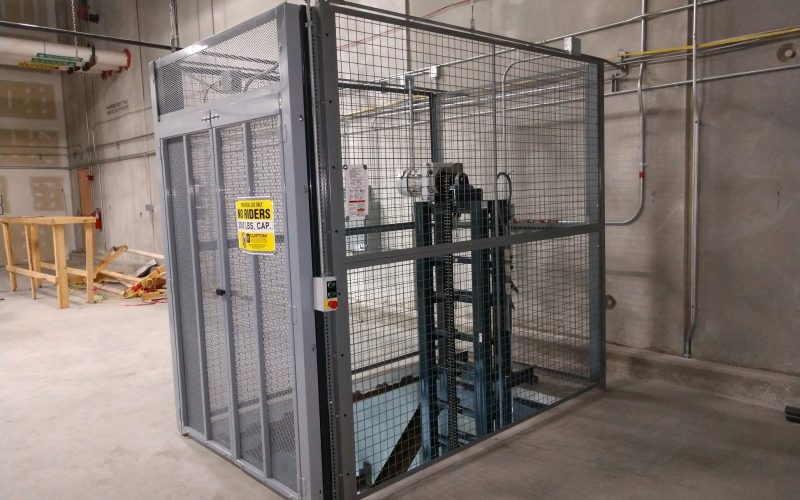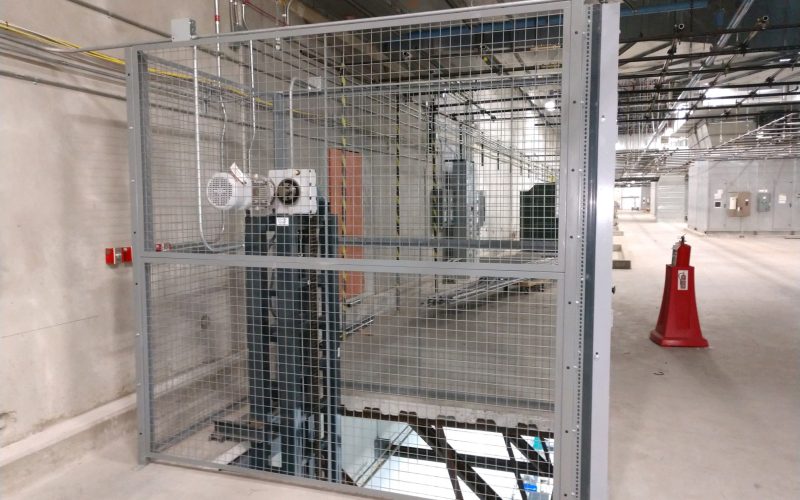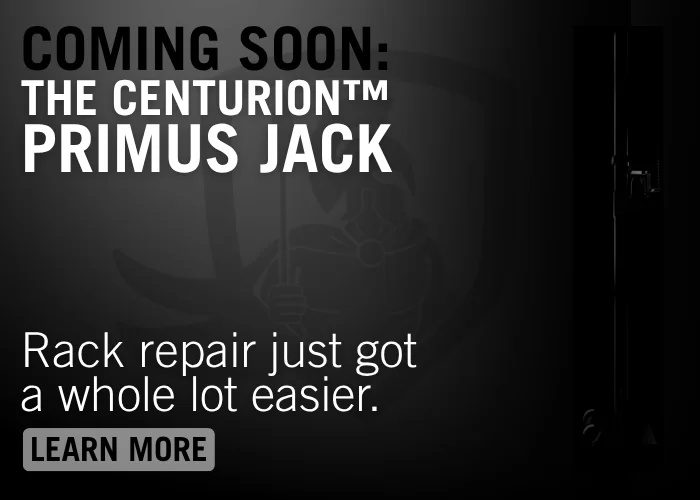Vertical Lift Enclosures (VRCs)
vrcs Application Overview
Vertical material lifts, also known as Vertical Reciprocating Conveyors (VRCs), have become integral in modern material handling solutions, providing efficient vertical transportation of goods within warehouses, factories, and distribution centers. Ensuring the safety, reliability, and optimal performance of these VRCs is essential for any operation.
SpaceGuard Products is your trusted partner for VRC enclosures and guarding solutions. Our VRC products are designed to not only protect your equipment but also enhance the safety of your workforce. With a diverse range of features and benefits, our VRC enclosures are tailored to meet the unique requirements of your facility.
VRC Features
ANSI Standard Compliance
Our VRC enclosures are meticulously designed and installed to meet the stringent ANSI Standard B20.1, guaranteeing compliance and adherence to industry safety regulations.
Integrated Safety Interlocks
Equipped with integrated safety interlocks, our enclosures provide a foolproof system. These interlocks prevent personnel from opening the gate or gaining access to the lift area during operation or when the platform is not present, enhancing overall safety.
Flexible Design
We understand that material containment is critical during VRC movement. Our flexible design allows the enclosure to extend seamlessly from one level to another, effectively addressing concerns related to materials falling or protruding from the carriage.
VRC Benefits
01.
Enhanced Safety
Our VRC enclosures prioritize safety above all else. With ANSI Standard compliance and integrated safety interlocks, they ensure that the lift area remains secure during operation, reducing the risk of accidents and injuries.
02.
Compliance Assurance
By choosing our VRC enclosures, you can rest assured that your operation adheres to industry safety guidelines and regulations. This not only enhances safety but also helps avoid costly fines and penalties.
03.
Operational Efficiency
Our flexible enclosure design accommodates material extensions, promoting operational efficiency. It ensures that materials remain contained and protected during the lift's movement, reducing the potential for damage or accidents.
VRC Product Range

BeastWire® Machine Guarding
BeastWire® Machine Guarding
VRC Case Studies
Explore real-world examples of how SpaceGuard Products has partnered with various facilities to implement VRC enclosure solutions, enhancing safety, productivity, and compliance.

What’s New With Jushi!
Overview Jushi, one of the largest fiberglass manufacturers in the world, recently opened an 800,000 sq. ft. plant in Columbia, South Carolina—likewise, one of the
VRC Blogs
Stay informed and inspired with our collection of informative and engaging blogs, offering valuable insights and expert advice on the latest trends and best practices in VRC enclosure solutions. Dive into our blog articles to discover how to optimize safety and efficiency in your VRC systems.



Need a quote?
Need more information? Ready to get started?
Contact us today to see how we can help your project be a success!
vrc enclosure
Frequently Asked Questions
The primary purpose of a VRC enclosure is to create a secure, physical barrier around the lift to prevent personnel from entering the dangerous operational area. VRCs are specifically designed to transport materials, not people, and therefore do not require the same level of safety and control systems as a standard passenger elevator. An enclosure is crucial for mitigating risks such as fall hazards, crush points, and the danger of materials falling from the lift platform. Unlike an elevator shaft, a VRC enclosure is built to protect against material-specific hazards while complying with the strict safety standards for non-passenger transport.
Integrated safety interlocks are a critical component of VRC enclosures and are required by ANSI B20.1. They function as a “foolproof” system by creating a dependency between the gate and the VRC’s operation. When a gate is open, the interlock prevents the lift from moving. Conversely, the gate remains locked and cannot be opened unless the VRC platform is safely at that specific level. This prevents a worker from being crushed by the moving platform and ensures that no one can accidentally enter the enclosure when the VRC is not present, thereby eliminating a fall hazard.
The most critical regulation is the ANSI/ASME B20.1 Safety Standard for Conveyors and Related Equipment. This standard specifically addresses the safety requirements for VRCs, since they are classified as conveyors, not elevators. The standard dictates critical safety features such as load capacity, operating speed, and, most importantly, the need for fully enclosed guarding with interlocked gates at each access point. Complying with B20.1 ensures that the VRC enclosure meets the highest safety benchmarks and is recognized by regulatory bodies like OSHA, thereby protecting both the company and its employees from liability and injury.
The flexible, continuous design of our VRC enclosures is key to preventing material containment issues. Unlike simple, segmented barriers, our system extends seamlessly from one level to the next, creating a continuous wall around the lift’s path. This prevents materials from falling off the platform and into the surrounding workspace, which could cause a serious hazard for workers below. Additionally, it ensures that no part of a load, such as a pallet or a box, can protrude from the carriage and get caught on a building structure or another piece of equipment, which could cause a catastrophic failure.
A VRC enclosure is specifically for VRCs, which are a type of conveyor. The enclosure is designed to protect people from the VRC. A shaftway enclosure, on the other hand, is a more generic term for an enclosed vertical space that could be used for an elevator, dumbwaiter, or even just a utility chase. While both need to be secure, a VRC enclosure must comply with the specific mechanical and electrical safety standards of the ANSI B20.1 standard. Additionally, a shaftway might have fire-rating requirements or other building code considerations that are not applicable to a VRC enclosure, which is primarily focused on operational safety.
